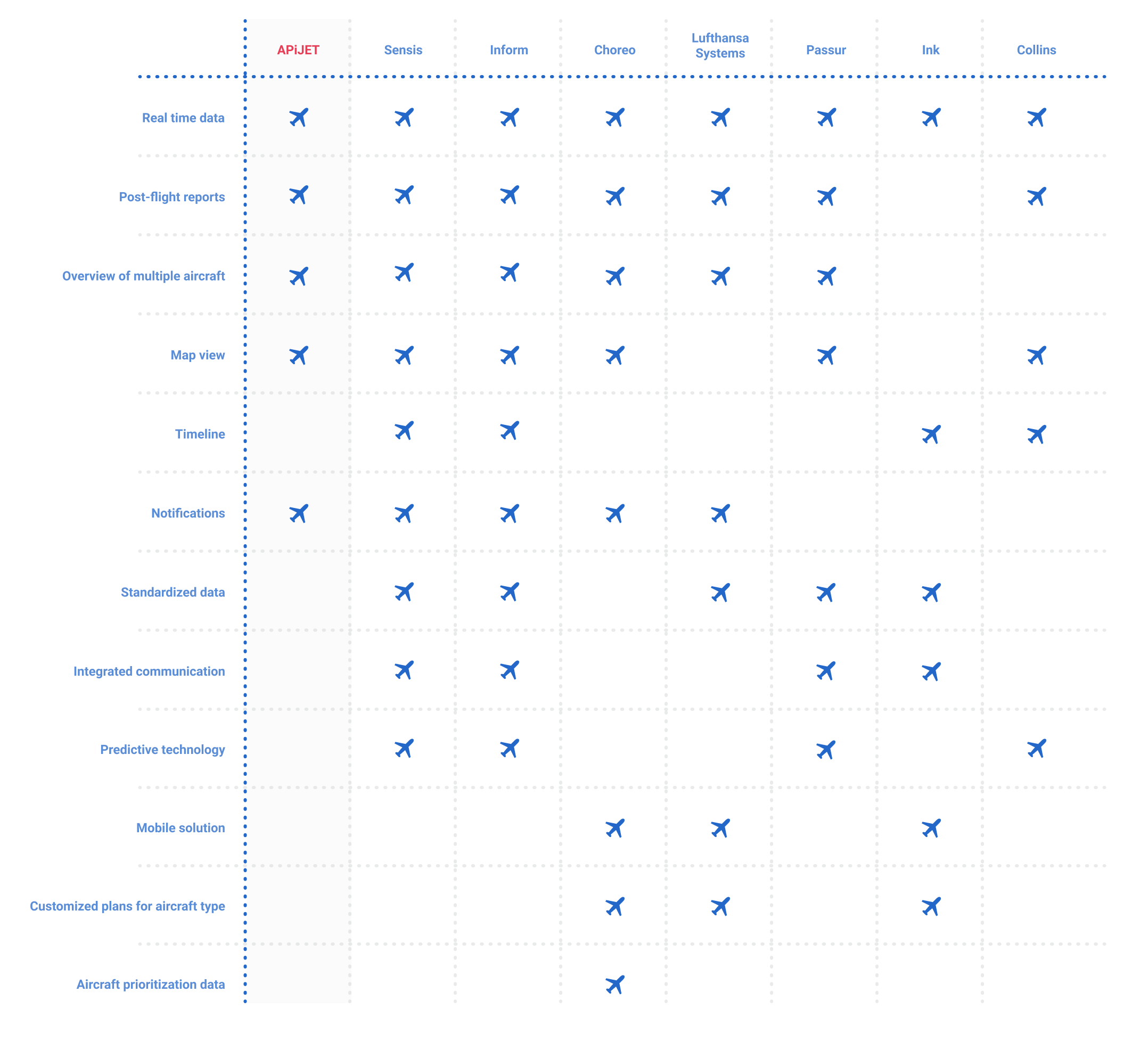
APiJET Turnaround Management
A comprehensive multi-flight solution to the airline turnaround process.

A comprehensive multi-flight solution to the airline turnaround process.
For my senior capstone project, our team of four UX Designers worked closely with aviation company APiJET to tackle the hectic and costly airline turnaround process. We designed Turnaround Management as a customizable solution for Station Operation Managers to make crucial decisions for multiple flights and reduce loss of information through real-time data. This project was completed during the Covid-19 pandemic, and work was conducted remotely.
User Experience Design and Research. Project Manager for the design phase.
4 Months. March 2020 - June 2020
Nanda Sundaresan, Erin Graves, Asikur Rahman
For each flight at an airport, there is a process known as ‘turnaround’ which starts when a plane docks at the gate to deboard passengers and ends when its wheels leave the runway for takeoff. Nearly 80% of all flights are at least 15 minutes late and the origin of most delays is during aircraft turnaround. These delays cost as much as $26.6 billion each year in the United States.
At the center of each turnaround is the Station Operations Manager. They communicate with many parties and utilize many applications to get the information they need to prevent delays. Among all this distributed information, some of it can be belated, lost, or inaccurate, causing these costly delays. With the help of APiJET, our team set out to create a solution.
We first completed a competitive analysis to understand where APiJET could bring the most value.

Due to limitations of coronavirus, we were only able to schedule virtual interviews with two Station Operation Managers (SOMs). However, this key user information was supported by contextual inquiry and interviews with both stakeholders and subject matter experts.
We used a rainbow chart to highlight the most frequent observations and to group these observations based on themes. This gave us both qualitative and quantitative insights into our research interviews.

We discovered four main user pain points: Communication, Prioritization, Data Visibility, and Real Estate Challenges, from which we developed our design requirements.
During their work, the Station Operation Managers we interviewed were using multiple monitors with many flight software and chat apps open at the same time. We knew we wanted to consolidate all of this information into one, comprehensive web app with the requirements below.
The application, in order to reduce overall turn time to prevent delays and reduce financial implications, must include…
We individually brainstormed, sketched, and created low fidelity designs, then collaboratively created mid and high fidelity mockups. Our requirements, as well design critiques and stakeholder involvement, were crucial in shaping our designs.
Low to high fidelity designs progression
During the design phase, I acted as the project manager and distributed tasks as well as documented the process. I focused on designing the main map, priority display, filters, and settings, as well as assisting with team members' tasks and facilitating team design critiques.
Our final prototype includes a customizable dashboard with the most important information, like flight information, priority, and turn status, up front. It includes a detailed flight list where the user can monitor multi-flight progress, see delays approaching, and proactively message the responsible parties. It also includes in-app chat as well as message aggregation from third-party sources to reduce information scatter. Finally, the settings are customizable down to the delay threshold and its colors for better accessibility.
